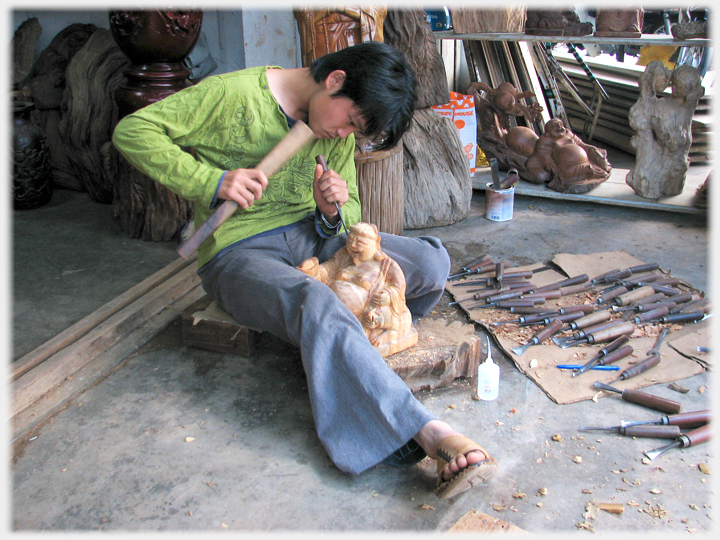
Ready-to-hand
...the less we just stare at the thing called hammer, the more we take hold of it and use it, the more original our relation to it becomes and the more undisguisedly it is encountered as what it is, as a useful thing. The act of hammering itself uncovers the specific ‘handiness’ of the hammer.
Martin Heidegger (1927/2010)

Heidegger is separating the world of intellectual observation
(present-at-hand),
 A bit of background - Heidegger's sometimes fantastical etymology.
with its sense of standing aside, looking on, being objective, from the idea of our lived activities (ready-to-hand), within which life seems to be conducted, and within which the hammer is being used for a purpose. He rightly sees that this latter is more a foundation for our public communications; rather than the other way around. His distinction overlaps and interacts with
another one;
A bit of background - Heidegger's sometimes fantastical etymology.
with its sense of standing aside, looking on, being objective, from the idea of our lived activities (ready-to-hand), within which life seems to be conducted, and within which the hammer is being used for a purpose. He rightly sees that this latter is more a foundation for our public communications; rather than the other way around. His distinction overlaps and interacts with
another one;
 An analogy for the relationship of thought and language.
that of verbal and nonverbal
thought.
An analogy for the relationship of thought and language.
that of verbal and nonverbal
thought.
 A page which dwells on this distinction a little further.
A page which dwells on this distinction a little further.
Hammering does not involve words. Look at those chisels, every end is different: has a different purpose. The competent carver takes up the chisel best suited to the next action. No words are involved either
internal
 How much of thought is accounted for by internal speech?
or external; there is no communication, no analysis. Yet look how complex the thinking processes required must have to be. Heidegger’s obscure language spurs, guides, irritates us, into trying to shed light on our assumptions.
How much of thought is accounted for by internal speech?
or external; there is no communication, no analysis. Yet look how complex the thinking processes required must have to be. Heidegger’s obscure language spurs, guides, irritates us, into trying to shed light on our assumptions.
The quote is from the Joan Stamburgh translation of Being and Time, apart that is from the word ‘uncovered’, to replace her ‘discovered’, in accord with the Macquarrie (1967) translation, and his ideas on the text. This new translation appeared in full in 2010, the quote is from page 69, German pagination. Ready-to-hand is Heidegger’s neologism for the world around us as it is when we are engaged with its entities in a non-intellectual way, the contrast being with his term present-at-hand that denotes the intellectual objects of our world - those which stand in our presence, about which we talk and communicate.
This carver of laughing Buddhas was photographed near the entrance to Love Valley, a park on the edge of Đà Lạt, in southern Vietnam.
Above hovering on blue introduces a link: click to go, move away to stay.

Saturday 29th May 2021
 ...guide to this site
...guide to this site